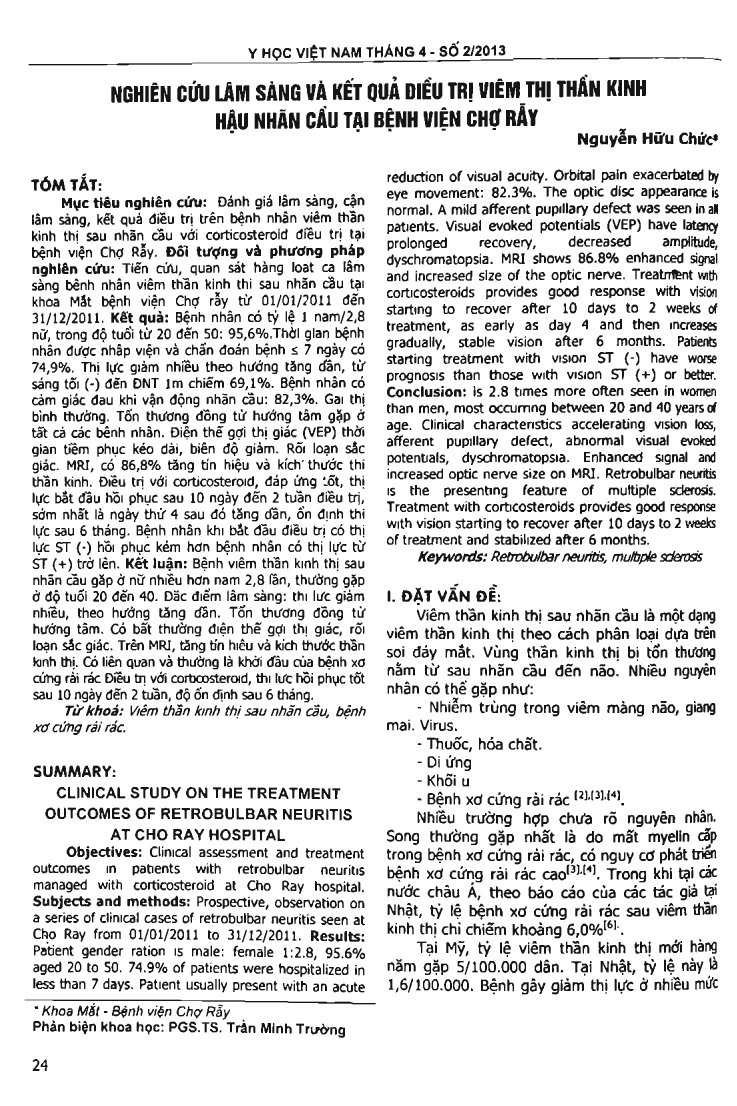
Objectives: Clinical assessment and treatment outcomes in patients with retrobulbar neuritis managed with corticosteroid at Cho Ray hospital. Subjects and methods: Prospective, observation on a series of clinical cases of retrobulbar neuritis seen at Cho Ray hospital from 01/01/2011 to 31/12/2011. Results: Pzitient gender ration is male: female 1:2.8, 95.6 percent aged 20 to 50. 74.9 percent of patients were hospitalized in less than 7 days. Patient usually present with an acute reduction of visual acuity. Orbital pain exacerbated by eye movement: 82.3 percent. The optic disc appearance is normal. A mild afferent pupillary defect was seen in all patients. Visual evoked potentials (VEP) have latency prolonged recovery, decreased amplitude, dyschromatopsia. MRI shows 86.8 percent enhanced signal and increased size of the optic nerve. Treatment with corticosteroids provides good response with vision starting to recover after 10 days to 2 weeks of treatment, as early as day 4 and then increases gradually, stable vision after 6 months. Patients starting treatment with vision ST (-) have worse prognosis than those with vision ST (+) or better. Conclusion: is 2.8 times more often seen in women than men, most occurring between 20 and 40 years of age. Clinical characteristics accelerating vision loss, afferent pupillary defect, abnormal visual evoked potentials, dyschromatopsia. Enhanced signal and increased optic nerve size on MRI. Retrobulbar neuritis is the presenting feature of multiple sclerosis. Treatment with corticosteroids provides good response with vision starting to recover after 10 days to 2 weeks of treatment and stabilized after 6 months.
- Đăng nhập để gửi ý kiến
